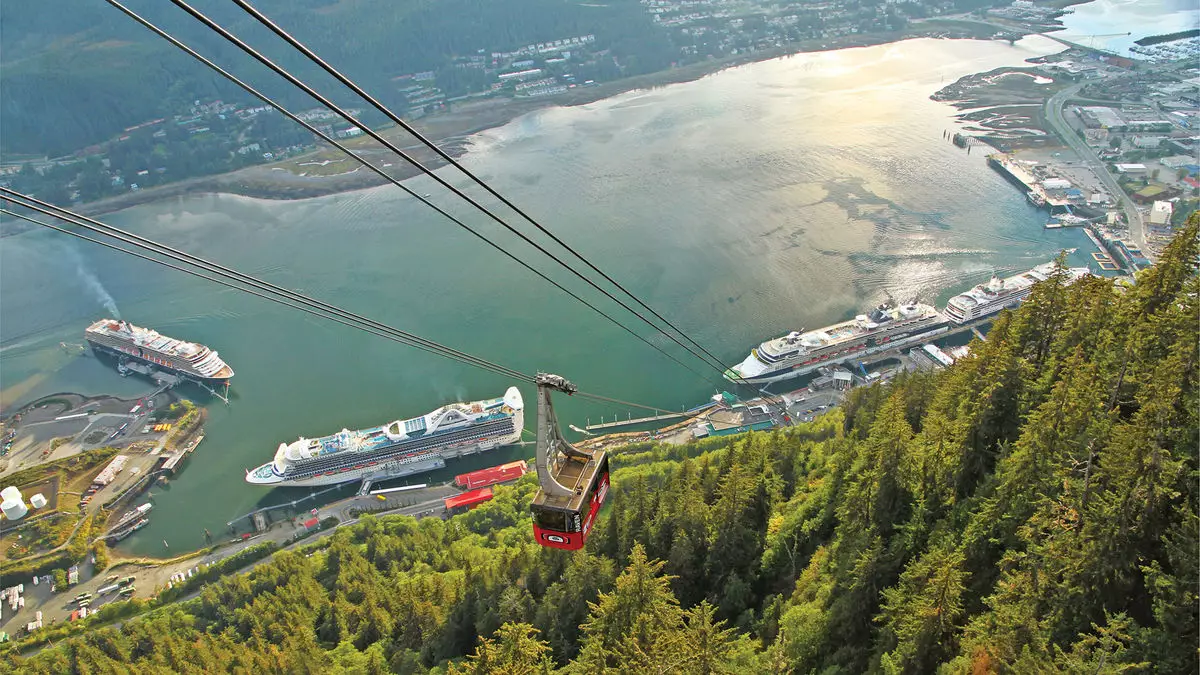As the world emerges from a pandemic that decimated travel, the cruise tourism industry stands at a crossroads. While some ports are scaling back their cruise operations due to environmental and community concerns, others, particularly in Alaska, actively seek to bolster their cruise tourism infrastructure. Russell Dick, CEO of Huna Totem Corp., emphasizes that the sentiment toward cruise tourism is not uniform across Southeast Alaska; many communities remain enthusiastic about the economic benefits these ships bring. This underscores a broader theme in tourism where local voices can significantly influence operational decisions, ultimately shaping the future of travel destinations.
Huna Totem Corp. has been a pioneer in transforming Alaskan ports for over two decades, exemplified by the opening of Icy Strait Point—a destination that offers visitors a unique blend of wilderness and adventure through activities such as wildlife tours and adrenaline-pumping ziplines. With a recent investment in new port facilities, including a double-berth pier and a terminal in Whittier, and the establishment of Port Klawock, Huna Totem is setting a precedent for enhanced visitor experiences. These developments reflect a proactive stance, prioritizing not just the quantity of visitors but also the quality of their experiences.
Yet, this optimism isn’t universally shared. Cruise industry leaders, like Robert Morgenstern from Carnival Corp., are grappling with capacity constraints, particularly in popular ports like Juneau. The reality is stark: as some destinations restrict cruise traffic, the industry must pivot and adapt. Morgenstern himself suggests that cruise lines might need to explore alternative ports, thereby redistributing visitor flows and stimulating economic growth in lesser-known areas.
The economic landscape in many Alaskan communities adds a layer of urgency to the dialogue around cruise tourism. With timber and fishing industries declining, tourism stands as a critical lifeline, offering much-needed economic revitalization. The lack of robust economic alternatives means that communities are increasingly keen to welcome cruise tourists, as highlighted by Morgenstern’s observations about local enthusiasm for the economic impacts of cruise traffic.
For communities beyond Alaska, such as Prince Rupert in British Columbia, there is a concerted effort to enhance tourism offerings, focusing on creating vibrant shore excursions that provide meaningful off-ship experiences. This is indicative of a growing recognition that the cruise experience is not solely about the ship, but also about the places and adventures that await on land.
With the industry’s shifting patterns, there is a palpable anticipation for longer and more varied itineraries. Carnival’s experience suggests that repeat cruise passengers are eager to explore new destinations on subsequent trips to Alaska. This focus on developing less-traveled ports aligns with the growing industry acknowledgment that destinations outside Juneau can offer equally rewarding experiences.
As tourism leaders in regions like South Central Alaska, including Anchorage, express a readiness to accommodate more cruise traffic, the dynamics of visitor distribution become pivotal. The vastness of the region helps mitigate the impact of peak cruise days, enabling a more distributed tourism experience that smaller communities may not have the capacity to manage. However, concerns remain whether the overall sentiment against cruises will persist and lead to more restrictions among Southeast Alaskan communities.
Ultimately, the future of cruise tourism in Alaska is teetering on a fine balance between economic necessity and community sentiment. The proactive expansion of port facilities and a willingness to diversify offerings signal a forward-thinking approach within the industry. However, cruise lines must remain agile, continuously seeking alternatives while ensuring that they respect the community’s voice. The trajectory of Alaskan cruise tourism will be defined by how effectively industry stakeholders can foster a symbiotic relationship with local communities, turning what could be a contentious issue into a collaborative opportunity for growth and sustainability. As this complex narrative unfolds, the role of diverse destinations and the evolving preferences of travelers will undoubtedly shape the region’s tourism landscape for years to come.


Leave a Reply